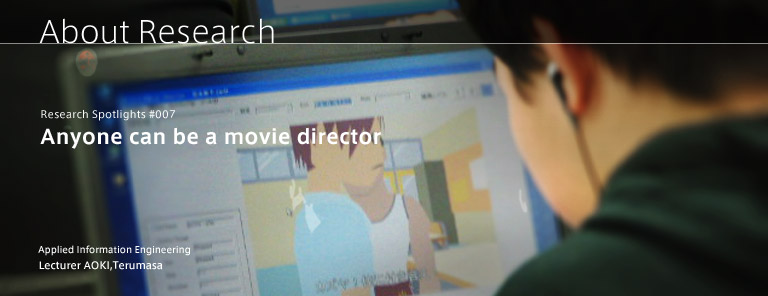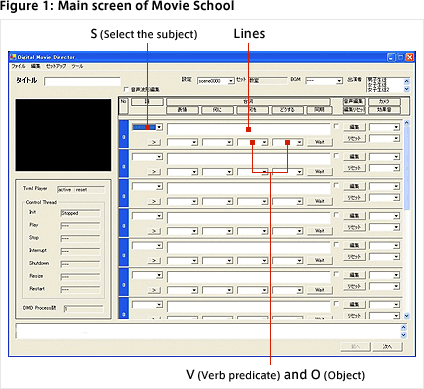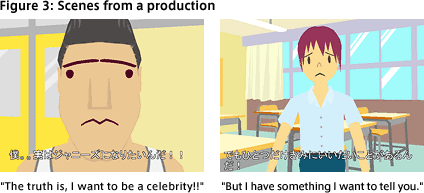- HOME
- Research
- Research Archives
- Anyone can be a movie director
Anyone can be a movie director

Terumasa Aoki first connected to the internet over ten years ago when he was a graduate student working on software design. It left a lasting impression on him: "it's frustrating." Even though we were all accustomed to seeing clear images on television, the internet had only text lined up on a page. Aoki has been thinking of how to render the web into increasingly visual formats ever since.
Bottom-up content production
He is currently working extensively with research pertaining to content distribution. Although he is making rapid progress with digital content production, editing, accumulation, retrieval, delivery, management, protection and display, etc. "from where it is made to where it is seen," what all these have in common is that he "wants to make video content as simple and freely manipulable as text data." At present, video content production is more than 1000 times as expensive and requires over 1000 times the storage capacity to deliver as compared to scenario production alone. In addition, searching for desired video content still does not compare to the accuracy and precision of text searches.
Among these topics of research, one experiment at the content "production" stage is the development of "Digital Movie Director" (DMD). By entering S (subject), V (verb predicate) and O (object), an individual can use the DMD system (Figure 1) to produce computer-generated movies with ease. The movie is generated in no time by combining materials such as characters, background and music, etc., which the program provides.
Rather than top-down content production which, similar to modern movie production, focuses first on completing the scenario and storyboard, the program uses bottom-up content production for the fundamental premise. While creating and viewing the movie one scene at a time, additional ideas branch out from there.
All one has to do is enter "who did what in which way," etc.; after that, it is only a matter of entering the characters' lines. The program also comes equipped with impressive camerawork and sound effects. Then, once the scenario is complete, the movie immediately begins. Music plays and lines are delivered in a synthesized voice.
This system will likely make it easy to share with and describe concepts to investors, etc. before producing the actual work, as well as allow many people to deliver the images.

Anyone can be a creator
Once a month beginning in October, 2005, Aoki has held "Movie School" on high school campuses. He is constantly surprised at the ideas that come from every class (Figure 2). Students enjoy the production itself and nearly 90% respond on surveys that they "want to do it again," thus rating the classes very highly.

The class is scheduled for an entire day, from 10AM until 5PM. After giving a basic lecture to familiarize students on DMD, including video, production and scene-setting, etc., each student then works on producing their work. Students are given only two hours to produce their work. However, judging by work published on the web, their work is of very high quality.
One high school student's work illustrates the characteristics of this system (Figure 3: A production from the 2nd Movie School entitled "Friend").
Conversation in the classroom.
"The truth is, I want to be a celebrity!!" confides one character to a friend and starts showing off his various talents. The friend's following response ends the scene.
"But you'll never be a celebrity with an accent like that."
Fluency is still an issue with speech synthesis software. Lines like these were conceived specifically because students can continually watch to see how the actual movie will turn out. This production is a salient example of how one can enjoy production without having to think about the scenario and storyboard from the very beginning.

"In any field, I think it is better for the line between amateur and professional to be blurred." Aoki is now priming the system to make it soon downloadable from the web.
Interviewer:Tomohisa Sumita
(January 23, 2006)

